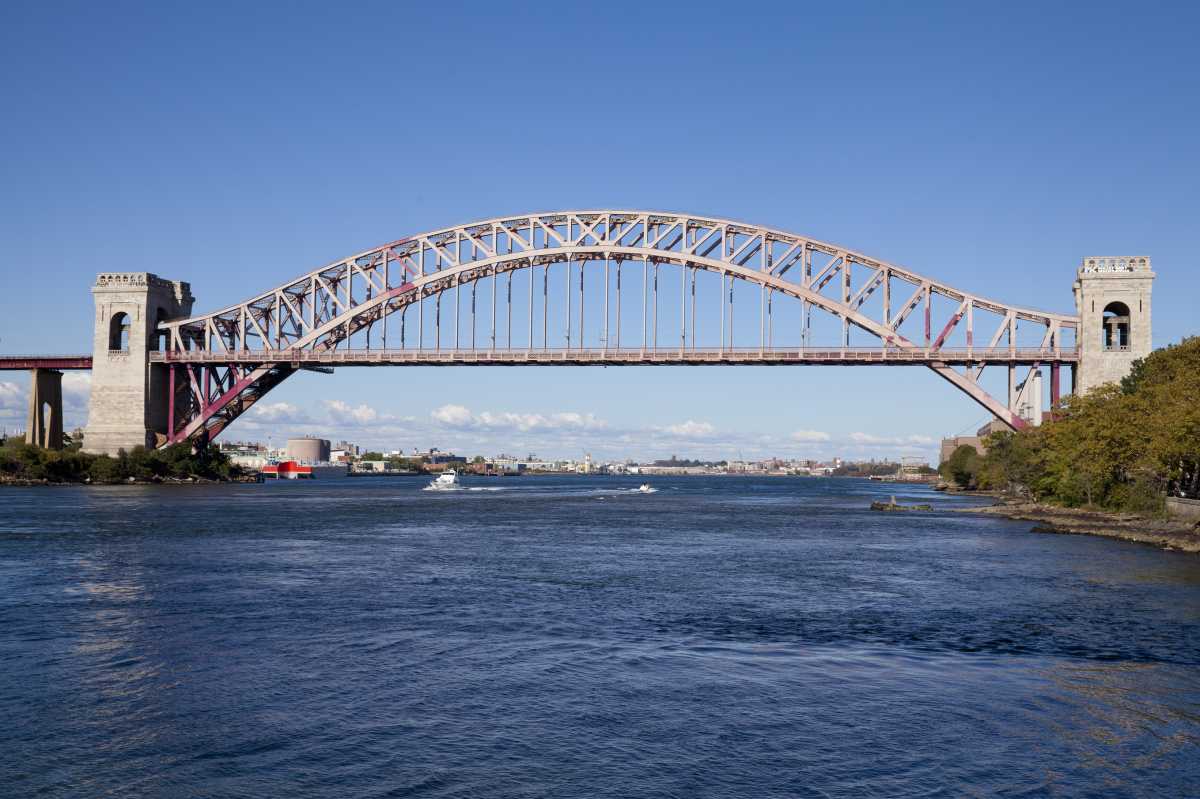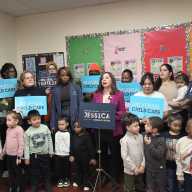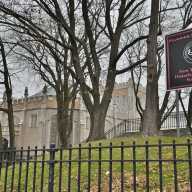A new study by the NYU Furman Center found that Astoria is one of the most gentrifying neighborhoods with rapid changes in housing cost, affordability and resident characteristics contributing to its inclusion on the list.
The study, titled The State of New York City’s Housing and Neighborhoods in 2015 and released on Monday, defined gentrification as “rapid growth in low-income neighborhoods.” Researchers also considered changes in the characteristics of residents such as race, education and age.
New York City was split into 55 sub-borough areas (SBA) for the purpose of this study. Those SBAs were then split into gentrifying neighborhoods, non-gentrifying neighborhoods and higher-income neighborhoods.
Gentrifying neighborhoods consisted of places that were low-income in 1990 and experienced rent growth above the median SBA growth between 1990 and 2010 through 2014.
The changes in these neighborhoods were compared and contrasted to non-gentrifying neighborhoods, which experienced slower growth, and higher-income neighborhoods, in which residents’ incomes dropped since the 1990s.
Astoria took the 11th spot on the gentrifying neighborhoods list out of 15. The average rent increased 27.6 percent between 1990 and 2010 through 2014.
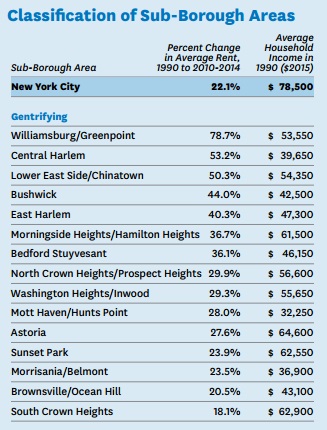
The study used the American Community Survey 2010-2014 and interpreted the changing conditions throughout the whole range of years.
Between 2000 through 2010, one-third of the housing units added in New York City were added in the city’s 15 gentrifying neighborhoods, though these 15 neighborhoods only account for 26 percent of the city’s population.
These neighborhoods also saw the fastest growth citywide in the number of college graduates, young adults, childless families, non-family households and white residents between 1990 and 2010 through 2014.
In Astoria, 24.6 percent of the adult population had a college degree in 2000 but in 2010 through 2014, 40.5 percent of adults had a college degree. The share of non-family households also increased during those same time periods from 40.9 percent non-families living in the neighborhood to 48.5 percent identifying as non-families.
Gentrifying neighborhoods are also defined by racial and ethnic changes. In gentrifying neighborhoods, the share of population that identified as black declined from 37.9 percent to 30.9 percent between 1990 and 2010. The number of residents who identified as white increased from 18.8 percent to 20.6 percent in the same time period.
Rental units are less affordable to low-income households in all neighborhoods, but the largest decrease in affordability was seen in gentrifying neighborhoods, the study found. In 2000, 77.2 percent of recently available rental units in gentrifying neighborhoods were affordable to those earning 80 percent area median income (AMI).
A four-person household earning an annual income of $67,100 is considered 80 percent AMI. In 2010 through 2014, less than half of rental units were affordable to those same households.
Not surprisingly, low- and moderate-income households saw the greatest increase in rent burden in these 15 neighborhoods. Between 2000 and 2010 through 2014, households earning between 50 and 80 percent of AMI experienced a 21 percent increase in rent burden. Moderate-income households or those earning between 81 percent and 120 percent AMI saw an 18 percent increase in rent burden during that same time period.
Residents in gentrifying neighborhoods also saw average household income increase, while non-gentrifying and higher-income neighborhoods saw income stagnation in the 1990s and decreases in the 2000s. Household income rose by 6.1 percent between 2000 and 2010 through 2014.
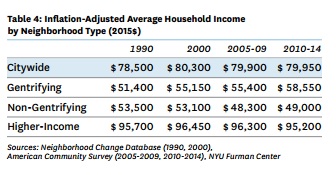
The study found that rent is going up across all neighborhoods and that resident characteristics are changing ― New Yorkers are younger, more educated and more likely to live in non-family households.
Though this is increasingly heightened in gentrifying neighborhoods, policymakers must look to alleviate problems of affordability and rent stagnation, the study concluded.

